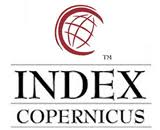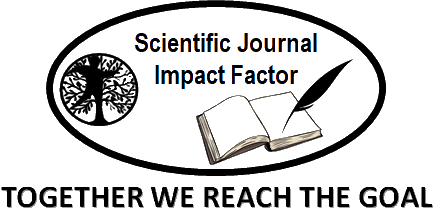Spatial Analysis of Social Studies Teacher Distribution and Its Impact on Learning Quality in Public Junior High Schools in Central Lampung Regency
Abstract
Keywords
Full Text:
PDFReferences
V. Karolina, S. Buwono, A. Aminuyati, H. Wiyono, and C. Queiroz, “Equality and Equity in Indonesian Education: The Consequences of Decentralization,” Int. J. Community Serv., vol. 1, no. 3, pp. 272–285, Nov. 2021, doi: 10.51601/ijcs.v1i3.47.
M. N. Asadullah, A. H. Jilani, S. D. Negara, and D. Suryadarma, “Improving the quality of basic education in ASEAN–Emerging challenges and reforms,” Int. J. Educ. Dev., vol. 116, p. 103292, July 2025, doi: 10.1016/j.ijedudev.2025.103292.
A. Zickafoose et al., “Barriers and Challenges Affecting Quality Education (Sustainable Development Goal #4) in Sub-Saharan Africa by 2030,” Sustainability, vol. 16, no. 7, p. 2657, Jan. 2024, doi: 10.3390/su16072657.
Y. Chen, A. Abbas, and A. Sandoval-Hernandez, “The need for social recognition: the impact of teachers’ professional honor on their intention to move to urban schools in rural China,” Soc. Psychol. Educ., vol. 28, no. 1, p. 119, June 2025, doi: 10.1007/s11218-025-10076-y.
A. McPherson, J. Lampert, and B. Burnett, “A summary of initiatives to address teacher shortages in hard-to-staff schools in the Anglosphere,” Asia-Pac. J. Teach. Educ., vol. 52, no. 3, pp. 332–349, May 2024, doi: 10.1080/1359866X.2024.2323936.
Y. Guo and X. Li, “Regional inequality in China’s educational development: An urban-rural comparison,” Heliyon, vol. 10, no. 4, p. e26249, Feb. 2024, doi: 10.1016/j.heliyon.2024.e26249.
R. Rojas Apaza, R. P. Paredes, R. Arpi, C. N. Quispe Lino, and E. Chura-Zea, “Urban-rural gap in education performance in Peruvian public institutions during 2018: an analysis using the Oaxaca-Blinder decomposition,” Front. Educ., vol. 9, Aug. 2024, doi: 10.3389/feduc.2024.1394938.
Y. Yu, D. Appiah, B. Zulu, and K. A. Adu-Poku, “Integrating Rural Development, Education, and Management: Challenges and Strategies,” Sustainability, vol. 16, no. 15, p. 6474, Jan. 2024, doi: 10.3390/su16156474.
S. Gorard, M. Ledger, B. H. See, and R. Morris, “What are the key predictors of international teacher shortages?,” Res. Pap. Educ., vol. 40, no. 4, pp. 515–542, July 2025, doi: 10.1080/02671522.2024.2414427.
H. Kano and T. I. Hayashi, “A framework for implementing evidence in policymaking: Perspectives and phases of evidence evaluation in the science-policy interaction,” Environ. Sci. Policy, vol. 116, pp. 86–95, Feb. 2021, doi: 10.1016/j.envsci.2020.09.001.
M. A. Engida, A. S. Iyasu, and Y. M. Fentie, “Impact of teaching quality on student achievement: student evidence,” Front. Educ., vol. 9, July 2024, doi: 10.3389/feduc.2024.1367317.
E. López-Martín, B. Gutiérrez-de-Rozas, A. M. González-Benito, and E. Expósito-Casas, “Why Do Teachers Matter? A Meta-Analytic Review of how Teacher Characteristics and Competencies Affect Students’ Academic Achievement,” Int. J. Educ. Res., vol. 120, p. 102199, Jan. 2023, doi: 10.1016/j.ijer.2023.102199.
S. Hennessy et al., “Technology Use for Teacher Professional Development in Low- and Middle-Income Countries: A systematic review,” Comput. Educ. Open, vol. 3, p. 100080, Dec. 2022, doi: 10.1016/j.caeo.2022.100080.
A. Jr. Singun, “Unveiling the barriers to digital transformation in higher education institutions: a systematic literature review,” Discov. Educ., vol. 4, no. 1, p. 37, Feb. 2025, doi: 10.1007/s44217-025-00430-9.
J. Cai and W. Wei, “Educational sustainability: A multi-scale elementary school resource distribution variability from China,” Heliyon, vol. 11, no. 2, p. e41846, Jan. 2025, doi: 10.1016/j.heliyon.2025.e41846.
S. Sternad Zabukovšek, P. Tominc, Z. Deželak, G. Nalbandyan, and S. Bobek, “Acceptance of GIS within ERP System: Research Study in Higher Education,” ISPRS Int. J. Geo-Inf., vol. 11, no. 2, p. 83, Feb. 2022, doi: 10.3390/ijgi11020083.
K. Muttaqin, R. Nurhidayah, N. Novianda, A. Ihsan, J. Sultan, and F. Rifqiyah, “Implementation of K-Means Clustering in Mapping Teacher Distribution Using Geographic Information System,” Elinvo Electron. Inform. Vocat. Educ., vol. 9, no. 1, pp. 187–196, Nov. 2024, doi: 10.21831/elinvo.v9i1.76884.
M. E. Berendsen, P. Hodza, and J. D. Hamerlinck, “Researching Student Interaction with GIS Software While Learning Spatial Concepts: Toward a Standard Measure of GIS Interaction,” J. Geogr., vol. 122, no. 4, pp. 81–92, July 2023, doi: 10.1080/00221341.2023.2220328.
F. Núñez, E. Albornoz, M. Gutiérrez, and A. Zumelzu, “Socially Sustainable Accessibility to Goods and Services in the Metropolitan Area of Concepción, Chile, Post-COVID-19,” Sustainability, vol. 14, no. 21, p. 14042, Jan. 2022, doi: 10.3390/su142114042.
H. G. van de Werfhorst, E. Kessenich, and S. Geven, “The digital divide in online education: Inequality in digital readiness of students and schools,” Comput. Educ. Open, vol. 3, p. 100100, Dec. 2022, doi: 10.1016/j.caeo.2022.100100.
Baharuddin and Burhan, “Urban and rural teacher perspectives on Indonesian educational reform: challenges and policy implications,” Cogent Educ., vol. 12, no. 1, p. 2497142, Dec. 2025, doi: 10.1080/2331186X.2025.2497142.
G. John, “IMPLEMENTATION OF INNOVATIVE TEACHING METHODS ON ENHANCING QUALITY TEACHING AND LEARNING IN SECONDARY SCHOOLS IN MOROGORO TANZANIA,” Pedagog. J. Pendidik., vol. 11, no. 2, pp. 264–277, Dec. 2024, doi: 10.33650/pjp.v11i2.9429.
C. Omoeva, N. Menezes Cunha, and W. Moussa, “Measuring equity of education resource allocation: An output-based approach,” Int. J. Educ. Dev., vol. 87, p. 102492, Nov. 2021, doi: 10.1016/j.ijedudev.2021.102492.
M. Levinson, T. Geron, and H. Brighouse, “Conceptions of Educational Equity,” AERA Open, vol. 8, p. 23328584221121344, Jan. 2022, doi: 10.1177/23328584221121344.
L. Zheng, X. Qi, and C. Zhang, “Can improvements in teacher quality reduce the cognitive gap between urban and rural students in China?,” Int. J. Educ. Dev., vol. 100, p. 102781, July 2023, doi: 10.1016/j.ijedudev.2023.102781.
A. Kim, “Impact of Systematic Support in Teacher Education and Professional Development on Training-Teaching Alignment and Instructional Quality,” J. STEM Educ. Res., July 2025, doi: 10.1007/s41979-025-00154-3.
T. Huizinga, N. Nieveen, and A. Handelzalts, “Identifying Needs for Support to Enhance Teachers’ Curriculum Design Expertise,” in Collaborative Curriculum Design for Sustainable Innovation and Teacher Learning, J. Pieters, J. Voogt, and N. Pareja Roblin, Eds., Cham: Springer International Publishing, 2019, pp. 115–137. doi: 10.1007/978-3-030-20062-6_7.
A. Nawas, I. G. N. Darmawan, and N. Maadad, “Certified to succeed? Multilevel analysis of the effects of teacher certification on educator well-being and student outcomes in Indonesia,” Teach. Teach. Educ., vol. 162, p. 105069, Aug. 2025, doi: 10.1016/j.tate.2025.105069.
S. R. Simonson, B. Earl, and M. Frary, “Establishing a Framework for Assessing Teaching Effectiveness,” Coll. Teach., vol. 70, no. 2, pp. 164–180, Apr. 2022, doi: 10.1080/87567555.2021.1909528.
F. Mustafa, H. T. M. Nguyen, and X. (Andy) Gao, “The challenges and solutions of technology integration in rural schools: A systematic literature review,” Int. J. Educ. Res., vol. 126, p. 102380, Jan. 2024, doi: 10.1016/j.ijer.2024.102380.
J. Jiang and S. Y. Yip, “Teacher shortage: an analysis of the rural teachers living subsidy policy on teacher attraction and retention in rural Western China,” Asia-Pac. J. Teach. Educ., vol. 52, no. 3, pp. 316–331, May 2024, doi: 10.1080/1359866X.2024.2328682.
Y. Irnidayanti and N. Fadhilah, “Teaching Quality in Indonesia: What Needs to Be Improved?,” in Effective Teaching Around the World : Theoretical, Empirical, Methodological and Practical Insights, R. Maulana, M. Helms-Lorenz, and R. M. Klassen, Eds., Cham: Springer International Publishing, 2023, pp. 225–244. doi: 10.1007/978-3-031-31678-4_10.
DOI: http://dx.doi.org/10.52155/ijpsat.v53.1.7504
Refbacks
- There are currently no refbacks.
Copyright (c) 2025 Susiana Susiana

This work is licensed under a Creative Commons Attribution 4.0 International License.



















